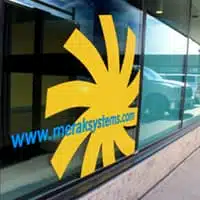Document management issues seem to be a common problem in organizations. Anyone working in smaller businesses are likely to be familiar with the “shared drive” and the related management and security issues inherent to this type of document management solution. As a business grows, so does the requirement for a solution to accurately secure and keep track of comment modification and versioning in a user friendly manner that also provides a common interface to make this task easier for new and existing employees.
After looking at options for content and document management, MERAK decided to implement SharePoint Foundations 2010 as it allowed the functionality that we were looking for that integrated with other Microsoft products already in use. While looking at the restrictions involved with using the Foundations version of SharePoint and testing of the default install as packaged by Microsoft, there are a few major limitations with the Microsoft packaged Foundations installation. The limitations that we considered to be important were the following:
- The Microsoft installer includes MS SQL 2008. This allows for a maximum database size of 4GB.
- The search functionality of SharePoint Foundations is pretty weak by default.
These limitations were enough to start looking for possible solutions to increase the size and search functionality of our new SharePoint server. As well, a little research into Microsoft best practices for the installation of Foundations using domain user accounts led us to start over from scratch with a new virtual machine. We chose to run our SharePoint Foundations server as a single server setup that contains both application server and database. This server is also a virtual machine, so it is best practice to make sure all installed drives for the VM are not a dynamic vhd. Due to the amount of disk activity, static vhd configuration is recommended.
Luckily, there are workarounds to increase the size of the database allowed as well as a much needed improvement in the search functionality.
To lift the database size limit, the best option is to install MS SQL Server 2008 R2 Express on the server before you install SharePoint Foundations. If SQL Server is already present on the machine before the SharePoint install, it will allow you to use the larger database size limit allowed by SQL 2008 R2. This will allow your SharePoint database size to be 10GB which is a much more reasonable limit if you have lots of content to add but have no idea of what size of database will be required. In our case, it made sense to take the increased database limit. To this date, there were no Microsoft SharePoint Foundation downloads that include SQL 2008 R2… you must install by the method above.
At this point the installation of SharePoint Foundations can take place. You will be able to use your SQL 2008 R2 installation for the SharePoint installation. Make sure that the SharePoint 2010 Products Configuration Wizard is run after the install is complete. At this point, the SharePoint 2010 Products Configuration Wizard will need to be run after every installation that affects SharePoint; including the installation of SharePoint 2010 Service Pack 1 which can be installed after the SharePoint Foundations installation has completed and the SharePoint 2010 Products Configuration Wizard has been run.
To allow for an improved search experience, including context based searches in SharePoint Foundations 2010, you can all install Microsoft Search Server 2010 Express. You can run Search Server 2010 Express on the SharePoint server. After installation, it is required again to run the SharePoint 2010 Products Configuration Wizard. Then the new search functionality can be configured from within the SharePoint Management Console.
Once your SharePoint installation is complete, you have one more option to increase the size of the database from 10GB maximum to 16GB maximum by taking advantage of Remote Blob Storage (RBS) which is a feature in SQL Server 2008 R2. It gives you the option of remotely storing larger documents in a blob file referenced by the database instead of leaving them in the database. You have the option to add this store back to the SharePoint database at any time.
After some research and testing, we found SharePoint Foundation 2010 offers a great opportunity for a small business to take advantage of the features in SharePoint. While for some organizations the limitations may warrant looking into the full version, we have found that most of those limitations were palatable in wake of implementing the alternative configurations outlined above.
Last Updated: June 25, 2025



